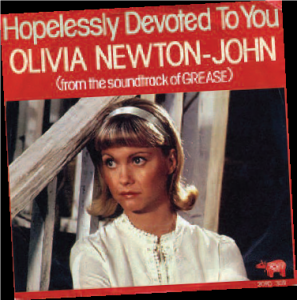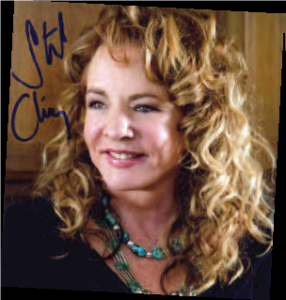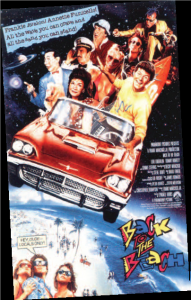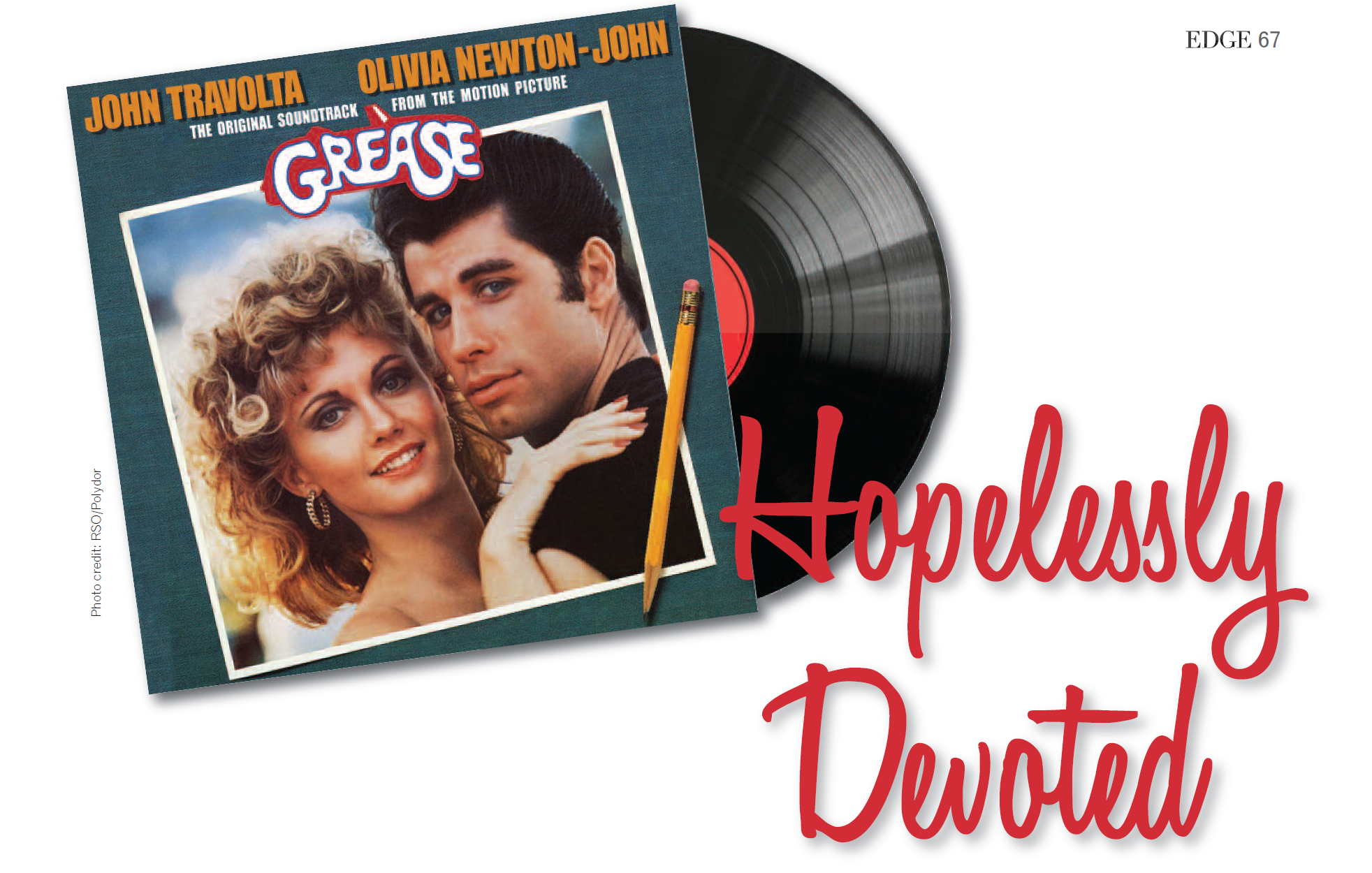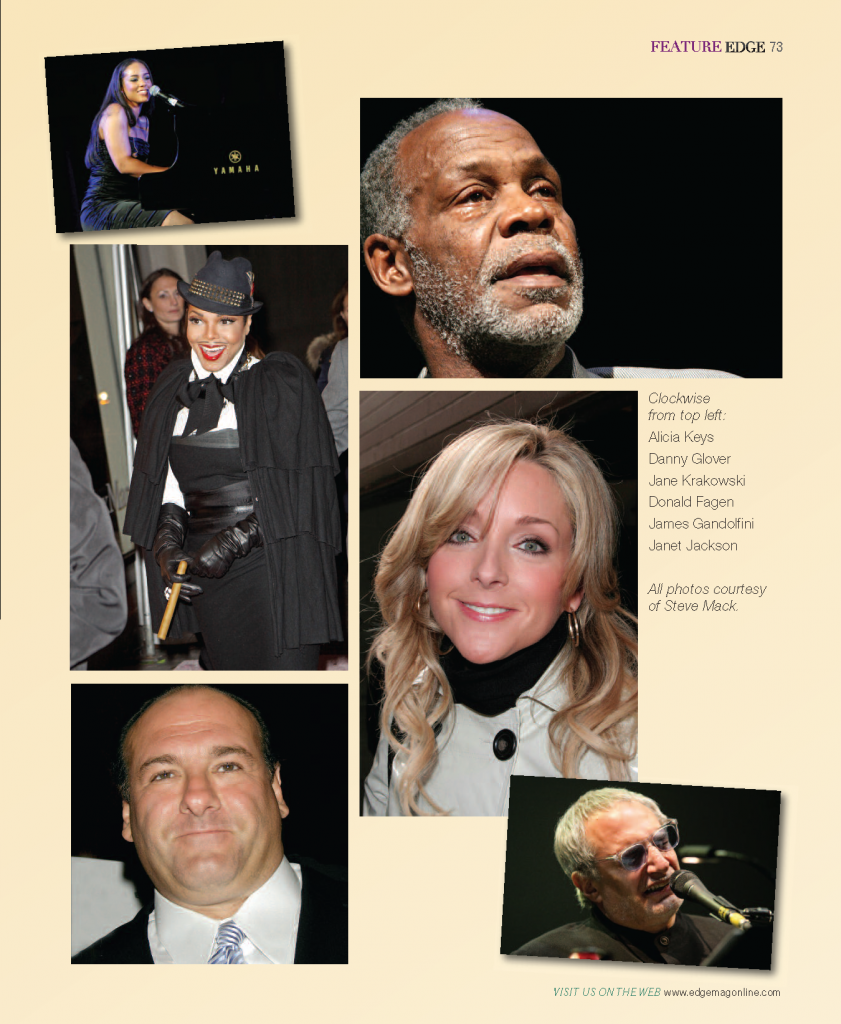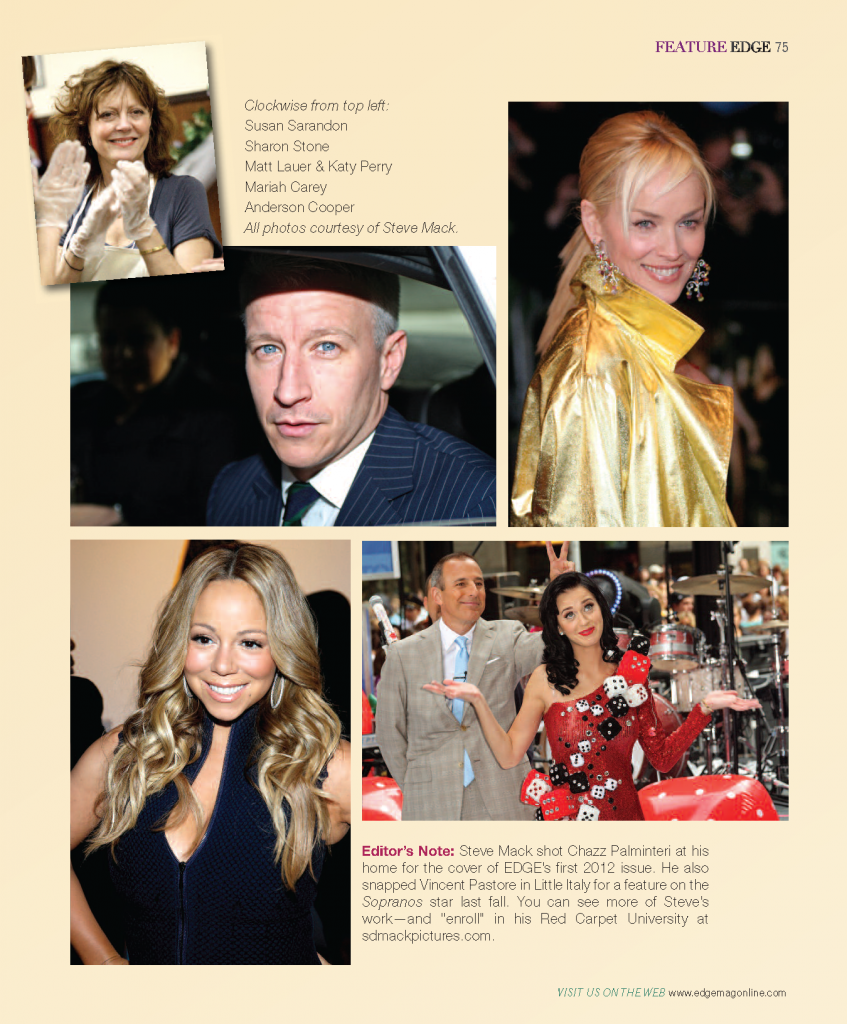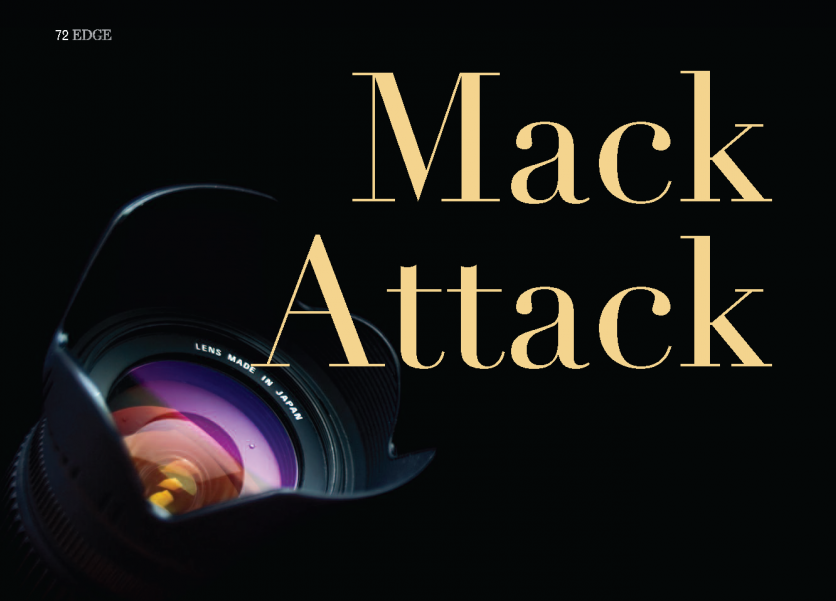Life may not begin at 60, but if these folks are any indication, it doesn’t get any less interesting…
60
Rod Hirsch • Dunellen
Community Leader
A hero supporting our overseas heroes, Hirsch founded “Operation Shoebox” in 2005. It’s a volunteer-based organization dedicated to shipping care packages filled with all sorts of necessities to our military men and women far away from home.
Cathi Rendfrey • Delran
Community Leader
Rendfrey is vigorously involved in women’s rights, directing the Women’s Opportunity Center at the YMCA of Burlington County, which helps displaced homemakers gain economic knowledge through education, networking, outreach and job preparations.
61
Eric Maskin • Princeton
Economist
Maskin won a Nobel Prize in 2007 for his contributions to mechanism design theory, a branch of economics that describes how institutions function in the midst of inefficient markets. Maskin lives with his family in Albert Einstein’s former residence.
Cynthia Meryl • Westfield
Theatre Director
Meryl founded the New Jersey Youth Theatre in Westfield, serving as its Artistic Director and Master Teacher for more than two decades. NJYT offers high-quality theatre arts education at little or no cost to young people with the talent and ambition to make it to Broadway.
Jane Hanson • Montclair
Community Leader
As co-founder of Partners for Women and Justice, Hanson has helped thousands of women and children involved in domestic violence and abuse. The organization offers free legal services from many volunteer lawyers as well as a fulltime staff.
JoJo Starbuck • Madison
Olympian/Coach
A four-time U.S. figure skating champion, Starbuck devotes herself to tutoring the newest generation of ice princesses at the Essex Skating Club.
Max Weinberg • Atlantic Highlands
Musician
The E Street Band veteran became a breakout star after teaming with Conan O’Brien. His new group, The Max Weinberg Big Band, plays the hits of the 30s, 40s & 50s.
62
Gloria Gaynor • Green Brook
Musician
Gaynor was the original disco diva, and she holds on to that title by continuing to deliver knockout concerts all over the world. I Will Survive has become an anthem for personal strength and self-discovery.
Bruce Springsteen • Rumson
Musician
Springsteen ranks among the most influential songwriters and performers in the history of rock. More important, you never know when he’ll pop on stage at a Jersey Shore club for a surprise set.
Zygi Wilf • Springfield
NFL Owner
A Fairleigh Dickinson grad, Wilf built malls and apartment complexes throughout New Jersey. He headed a group that purchased the Minnesota Vikings in 2005.
Stevie Wonder • Alpine
Musician
The master performer continues to churn out new music and electrify audiences after five decades in front of the microphone.
63
Bruce Springsteen • Rumson
Musician
Springsteen ranks among the most influential songwriters and performers in the history of rock. More important, you never know when he’ll pop on stage at a Jersey Shore club for a surprise set.
Zygi Wilf • Springfield
NFL Owner
A Fairleigh Dickinson grad, Wilf built malls and apartment complexes throughout New Jersey. He headed a group that purchased the Minnesota Vikings in 2005.
Stevie Wonder • Alpine
Musician
The master performer continues to churn out new music and electrify audiences after five decades in front of the microphone.
Nelson Johnson • Hammonton
Judge/Author
While conducting legal research in Atlantic County, he pieced together the seamy history of AC and wrote a book. Maybe you’ve heard of it? Boardwalk Empire.
Southside Johnny Lyon • Ocean Grove
Musician
The originator of Jersey Shore Rock, Lyon inspired countless young musicians, including Jon Bon Jovi. His band recently returned from a European Tour to play an east Coast swing that included—where else?—The Stone Pony in Asbury Park.
64
Steve Forbes • Bedminster
Publisher
Taking after his father and grandfather, Forbes published his first magazine while an undergrad at Princeton. As CEO of the publication that bears his family name, he is one of the country’s most influential conservative forces.
65
Sol Barer • Mendham
Organic Chemist
Barer is leading the research into therapies that turn incurable blood cancers into manageable diseases. A Rutgers Ph.D., he ranks among New Jersey’s most acclaimed and honored scientific minds.
Connie Chung • Middletown
Newswoman
The second woman to ever co-anchor a major network’s national news broadcast, Chung has worked for ABC, NBC, CBS, CNN and MSNBC. Did hubby Maury make this list? Read on…
Bob Hurley • Jersey City
Basketball
Coach Hurley has led St. Anthony’s High in Jersey City to 26 state championships (and counting). He was just the third high school basketball coach to be inducted into the Basketball Hall of Fame.
Woody Johnson • Bedminster
Business
Leader/Philanthropist The great-grandson of J&J co-founder Robert Wood Johnson, Woody serves as Chairman and CEO of the company and also owns the NFL Jets. He is an avid supporter of charitable organizations, fundraising for lupus, diabetes and more.
66
Bettye LaVette • West Orange
Musician
LaVette has been pumping out jaw-dropping blues, jazz, rock and R&B performances for a half-century. Since moving to NJ a decade ago, the Great Lady of Soul has scored a couple of Grammy nominations and performed at the Kennedy Center.
Roy Pedersen • Lambertville
Art Historian
A noted gallery owner, Pederson has been working for a decade on a landmark book about the Impressionist painters of New Jersey. It’ll stir up a hornet’s nest in the art world when it’s published in 2013. Trust us on this one.
67
Danny DeVito • Interlaken
Actor
Whether playing Louie on Taxi or Frank on It’s Always Sunny in Philadelphia, DeVito has a way of making the most loathsome characters utterly charming.
Deborah Harry • Red Bank
Musician
As the front woman for Blondie, Harry was the New Wave diva of the 1970s. She graduated from Hawthorne High and Centenary College, so she’s NJ all the way.
68
Mel Karmazin • Mantoloking
Entertainment Executive
The co-founder of Infinity Broadcasting in the 1980s, Karmazin pushed sports talk into the cultural stratosphere with WFAN, and later brought Howard Stern to millions of listeners as CEO of Sirius XM Radio.
69
George Benson • Englewood
Musician
A jazz guitar prodigy in the 60s, Benson launched an epic solo career in the mid-70s with Breezin’. The album went triple-platinum, selling more than three million copies. In 2009, Benson was recognized as a Jazz Master—the National Endowment of the Arts’ highest honor.
Leon Cooperman • Short Hills
Business Leader/Philanthropist
The billionaire head of Omega Advisors devotes a huge percentage of his attention and wealth to charity and education. Cooperman has followed the lead of Warren Buffett and Bill Gates in signing The Giving Pledge.
Peter Kellogg • Short Hills
Business Leader/Philanthropist
Kellogg took over his father’s specialty brokerage at age 30 and transformed it into a Wall Street market-maker. Since selling the company for $6.5 billion in 2000, Kellogg has been a generous supporter of countless causes, from his old high school to the U.S. Ski Team.
Joe Pesci • Lavallette
Actor
The quintessential pugnacious Garden Stater, Pesci was a successful child actor on Broadway and TV in the 1950s. He was running a restaurant in the Bronx in the late-70s when he got a call from Robert De Niro to audition for a co-starring role in Raging Bull. The rest, as they say, is history.
70
Muhammad Ali • Cherry Hill
Athlete
Ali was the first sports star to use his fame to draw attention to social injustice—and paid a heavy price. All these years later, the three-time heavyweight champ is still revered as both an athlete and activist.
Bonnie McCay • Bridgewater
Ecologist
The Rutgers professor is known for her extensive research focusing on sustainable marine fishery conditions and ecosystems around the world, while stressing the significance of the adaptation of institutions, such as science, law and property.
71
Daniel Murnick • Bernardsville
Physicist Another Rutgers professor, Murnick pioneered the development of the Laser Assisted Ratio Analyzer—a breath test that detects stomach/intestinal ulcers, which replaces invasive surgery.
72
Roger Ailes • Cresskill
Newsman
Say what you will about his politics or his TV network, but long before joining FOX, Ailes was already a legend as a conservative media consultant. He worked for the likes of Nixon, Reagan and Bush I, and engineered Rudy Giuliani’s first mayoral campaign in 1989.
73
Carolyn Clark • Long Valley
Ballet Director
The American Ballet Theatre performer used her knowledge and love of the dance world to fashion a highly acclaimed company and school in Livingston. It’s been flourishing under her direction since the 1960s.
Ben E. King • Teaneck Musician
King’s recording of Stand By Me had the unique distinction of being a Top 10 single 25 years apart, in 1961 and again in 1986. His nonprofit, The Stand by Me Foundation, reaches out to young people in Bergen County.
Maury Povich • Middletown
TV Personality
The father of tabloid infotainment is married to Connie Chung. They met in the early 80s when both were working in a Washington D.C. newsroom. His self-titled talk show has been pulling huge ratings for more than two decades.
74
Pete Dawkins • Rumson
Athlete/Military Leader
Dawkins turned down a scholarship to Yale to attend West Point in the 1950s. Good decision. He won the Heisman Trophy for Army in 1958 and retired with the rank of Brigadier General 25 years later. In between, he attended Oxford on a Rhodes Scholarship and while there taught the Brits an overhand rugby throw dubbed the Yankee Torpedo.
Joyce Carol Oates • Princeton
Author
Oates began writing at age 14 and has been on a straight path of success and determination ever since. Them, one of her first remarkable novels, has been followed by over 50 published works. She has been a creative writing professor at Princeton since 1978.
75
C.K. Williams • Princeton
Poet
The Newark-born poet won the Pulitzer Prize in 2000 for Repair, his volume regarding forgiveness. Like Oates, Williams teaches creative writing at Princeton.
76
Alan Alda • Leonia
Actor
During his years as the star of M*A*S*H*, Alda commuted from New Jersey to Hollywood so as not to uproot his family. Six Emmys later, his star continues to burn brightly, with unforgettable turns on series such as The West Wing, 30 Rock and The Big C. Alda also starred in the Broadway revival of Glengarry Glen Ross and the 2011 film Tower Heist.
Bob Lucky • Fair Haven
Electrical
Engineer Lucky won the coveted Marconi Prize for developing the adaptive equalizer that quadrupled data transmission rates for modems and telephone lines. An expert on the relationship between technology and society, Lucky chairs the group appointed by Gov. Christie to oversee the redevelopment of Ft. Monmouth.
Robert Wilson • Holmdel
Astronomer
Along with Bell Labs co-worker Arno Allan Penzias, Wilson discovered the cosmic microwave background radiation that proved the Big Bang theory, in 1964. They received a Nobel Prize in physics 14 years later.
77
Thomas Kean • Bedminster Township
Politician
Our 48th Governor (1982 to 1990)—as well as the Chairman of the “9-11 Commission”—Kean served as President of Drew University for 15 years. Kean University also bears his family name.
The Amazing Kreskin • North Caldwell
Mentalist
Born George Kresge in Montclair, Kreskin was inspired by comic book hero Mandrake the Magician. Not a psychic or an illusionist, Kreskin nonetheless has an uncanny talent for predicting the future. (He knew you’d be reading this article.)
78
Michael Graves • Princeton
Architect
Renowned for his interior design and commercial and residential buildings, Graves also produced sleek, functional domestic items for Target. He taught for nearly four decades at Princeton and is the director of the firm Michael Graves & Associates.
79
Danny Aiello • Saddle River
Actor
Few actors can play ugly and violent, and also gentle and sensitive, as well as Aiello. Stop and think of the big-time films he’s been in—Moonstruck, Bang the Drum Slowly, Do the Right Thing, Broadway Danny Rose, Pret-a-Porter, The Godfather. Simply amazing.
80
Wally Broecker • Closter
Geochemist
The man who coined the term Global Warming in the 1970s has authored more than 450 papers and 10 books, including The Great Ocean Conveyor in 2010. It was Broecker who convinced Land’s End billionaire Gary Comer to devote much of his fortune to raising awareness about climate change.
Jim Bunning • Cherry Hill
Athlete/Politician
The author of a perfect game against the Mets in 1964, Bunning followed a Hall of Fame baseball career with more than two decades of service in the U.S. Senate (R Kentucky). Bunning returned to South Jersey after leaving Washington in 2011.
Herwig Kogelnik • Rumson
Electrical Engineer
Among Kogelnik’s influential contributions during 40 years at Bell Labs were distributed feedback lasers, holographic data storage and multichannel optical networks. That last one is what makes the Internet work—take that Al Gore!
James P. “Doc” McGlone • Boonton
Educator
The beloved theater director staged more than 250 productions during his tenure at Seton Hall. He established an enduring Theater-in-the-Round tradition on the South Orange campus before retiring in 2011.
Bob McGrath • Teaneck
Entertainer
Known to generations of kids as Bob on Sesame Street, McGrath stands as one of the most beloved and trusted people in the history of children’s television.
81
Dick Kazmaier • Rumson
Athlete/Business Leader
Kazmaier appeared on the cover of Time in 1951 during a season that saw him win the Heisman Trophy for the Princeton football team. He turned down a chance to play in the NFL, choosing instead to attend Harvard Business School. Kazmaier went on to become one of the most respected figures in the sports marketing and finance industry.
John McPhee • Princeton
Writer
McPhee’s first book, A Sense of Where You Are, profiled fellow Princetonian Bill Bradley. Since then his work has garnered countless accolades and awards, including a 1999 Pulitzer for Annals of the Former World. McPhee’s roommate in school was Dick Kazmaier.
84
Mary Higgins Clark • Saddle River
Author
The Queen of Suspense has pumped out 42 best-sellers. She has been the President of the Mystery Writers of America and served as Chairman of the International Crime Congress.
John Nash • Princeton Junction
Mathematician
The subject of the film A Beautiful Mind, Nash broke new ground on game theory while struggling with paranoid schizophrenia. His mathematical theories have a wide range of applications, from economics to artificial intelligence, and provide an intriguing prism through which to view chance and events.
85
Bill Jersey • Lambertville
Filmmaker/Artist See
Judith Trojan’s profile of Bill on the facing page.
Clark Paradise • Toms River
Community Leader
Clark and his wife, Jean (81), stand out among the thousands of selfless community volunteers around the state. The Paradises created Your Grandmother’s Cupboard to collect and distribute desperately needed personal-care items (plus food and clothing) to impoverished families in temporary housing.
86
Bucky Pizzarelli • Saddle River
Musician
Pizzarelli was a guitar virtuoso long before it went electric, earning a seat in Vaughn Monroe’s big band as a teenager in the 1940s. He was voted into the New Jersey Hall of Fame last year.
87
Yogi Berra • Montclair
Athlete
One of baseball’s great pressure players—and the author of countless off-kilter quotes—Yogi is a regular institution in his adopted hometown of Montclair.
88
Frank Lautenberg • Cliffside Park
Politician
The oldest member of the U.S. Senate, Lautenberg initially retired but returned to Washington after Bob Torricelli got into hot water. Before entering politics, Lautenberg ran ADP in Roseland.
111
Melva Radcliffe • Wall
Supercentenarian
Yes, you read that right. Radcliffe was born in Paterson in 1901 and is closing in on the state longevity record of 112. She has survived colon cancer and two broken hips. Both of her sisters also reached triple-digits.
Editor’s Note: Is there an extraordinary 60+ New Jerseyan you think should have made this list? Tell us why on our Facebook page – EDGE Magazine (NJ).
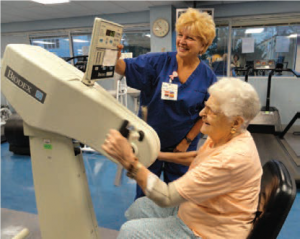
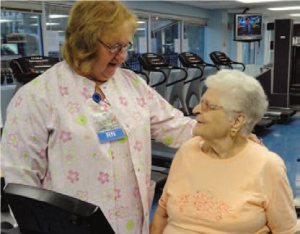 rehabilitation nurses, Judy Christianson and Jean Mikita. They all consider Antonetta a major success story and hosted a 90th birthday celebration for her this summer. “I enjoy the time I spend at the Center,” Antonetta says. “I look forward to it and it helps me get my day started. Jean, Judy and Hugh tease me a bit about how I’m a ‘flirt’ but they just like to bring a smile to my face.”
rehabilitation nurses, Judy Christianson and Jean Mikita. They all consider Antonetta a major success story and hosted a 90th birthday celebration for her this summer. “I enjoy the time I spend at the Center,” Antonetta says. “I look forward to it and it helps me get my day started. Jean, Judy and Hugh tease me a bit about how I’m a ‘flirt’ but they just like to bring a smile to my face.”
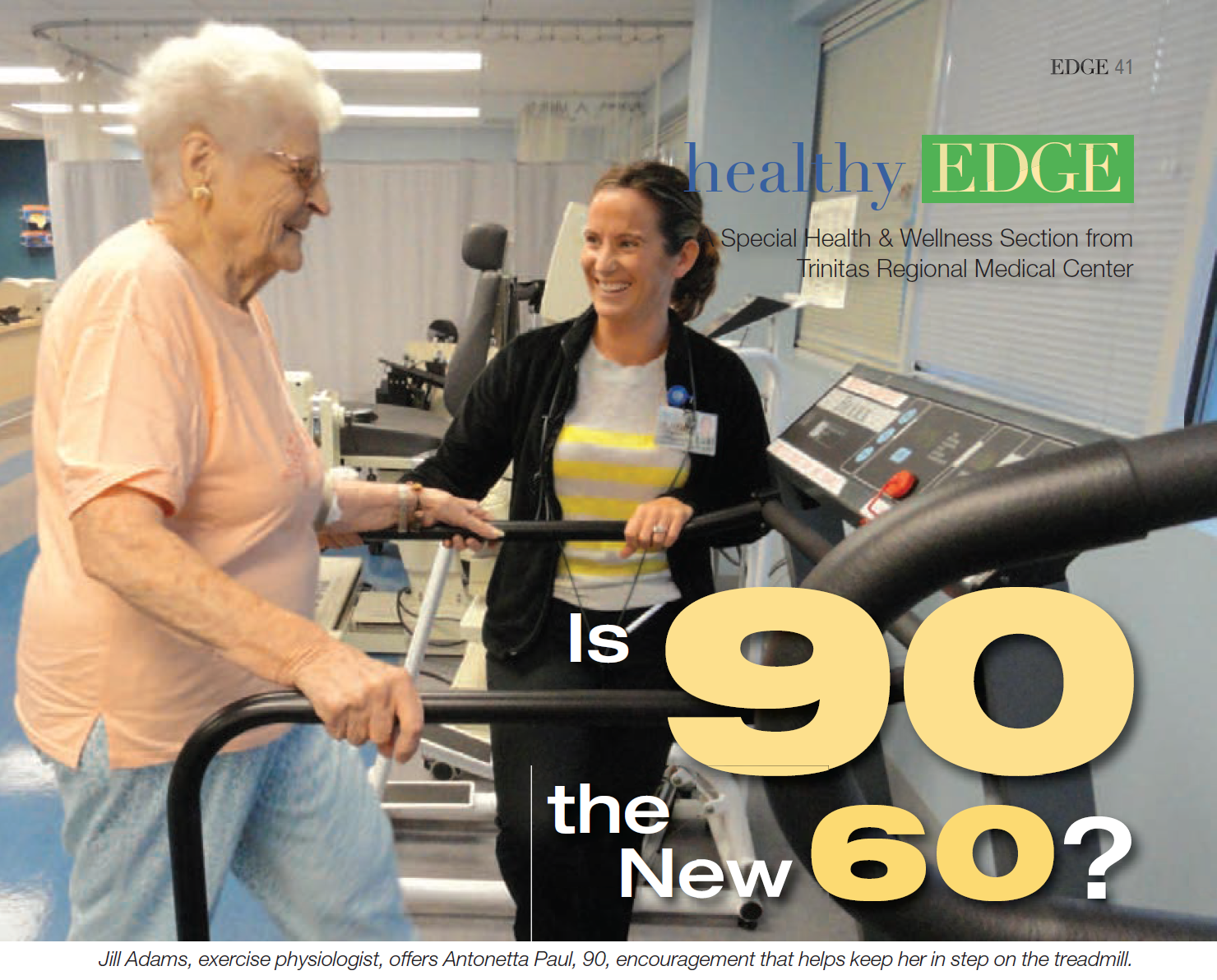

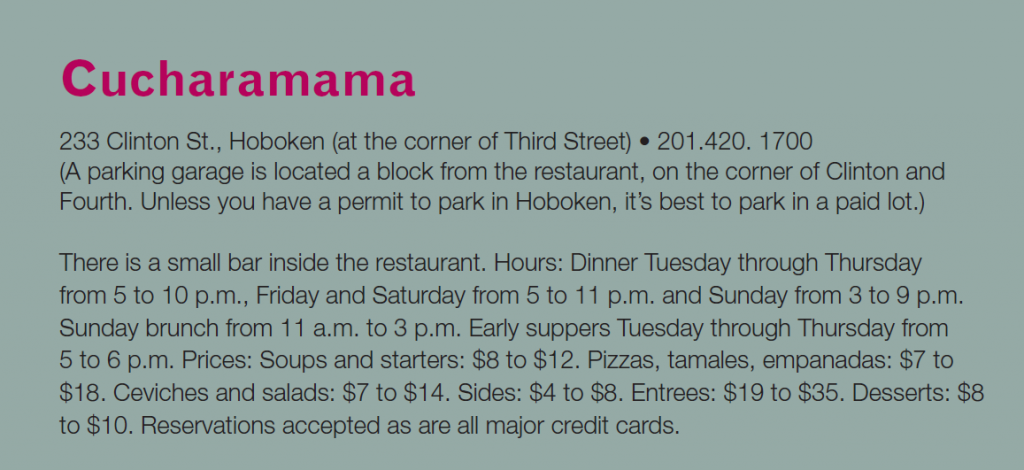


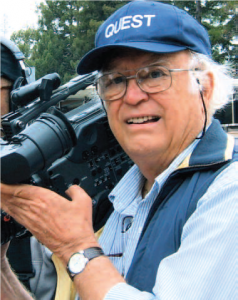
 ctions, a religious film company in Valley Forge, PA. “I told them I didn’t know anything about film,” says Jersey. “They hired me anyway, and I learned how to be an art director. I also realized how little I knew.” So he headed West to graduate film school at the University of Southern California. Graduating in 1956, he dipped his toe in the B-movie drama pool as Art Director of The Blob, Manhunt in the Jungle and 4D Man. But he was primed for documentaries. “There was something about wanting to connect to people in the real world and finding them much more interesting than working with actors with a script,” he says. “If you really care about people, they will know it, and they will open themselves up to you. And that’s what makes a good documentary.”
ctions, a religious film company in Valley Forge, PA. “I told them I didn’t know anything about film,” says Jersey. “They hired me anyway, and I learned how to be an art director. I also realized how little I knew.” So he headed West to graduate film school at the University of Southern California. Graduating in 1956, he dipped his toe in the B-movie drama pool as Art Director of The Blob, Manhunt in the Jungle and 4D Man. But he was primed for documentaries. “There was something about wanting to connect to people in the real world and finding them much more interesting than working with actors with a script,” he says. “If you really care about people, they will know it, and they will open themselves up to you. And that’s what makes a good documentary.”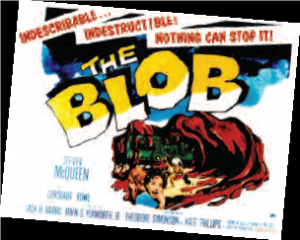 Bill Youngdahl to integrate a large, all white church in Omaha.
Bill Youngdahl to integrate a large, all white church in Omaha. producing and directing independent documentaries on such hot button issues as racism, criminal justice, gang violence, AIDS, Communism and integration. “For me, cinema vérité means letting the truth drive the story,” explains Jersey. “I don’t set out to prove anything— as many documentarians do. The difference between me and others is that I believe in being a participant observer. I explore options with my participants in the belief that our encounters will open them up to seeing more of themselves—not to see themselves as I see them. It’s a tricky business; but in my view, it’s an essential part of being a documentarian.”
producing and directing independent documentaries on such hot button issues as racism, criminal justice, gang violence, AIDS, Communism and integration. “For me, cinema vérité means letting the truth drive the story,” explains Jersey. “I don’t set out to prove anything— as many documentarians do. The difference between me and others is that I believe in being a participant observer. I explore options with my participants in the belief that our encounters will open them up to seeing more of themselves—not to see themselves as I see them. It’s a tricky business; but in my view, it’s an essential part of being a documentarian.”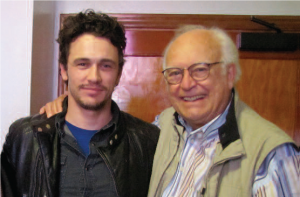 to debuting on PBS as part of the American Masters series. It should come as no surprise that Bill Jersey—father of five and grandfather of five—has no intention of winding down. “On the contrary, I’m winding up!” he says with relish, as he now juggles two careers instead of one.
to debuting on PBS as part of the American Masters series. It should come as no surprise that Bill Jersey—father of five and grandfather of five—has no intention of winding down. “On the contrary, I’m winding up!” he says with relish, as he now juggles two careers instead of one. out in the country where the light is changing. If you’re painting a river, you’re painting something in motion. The light does not sit there for you. That lovely shadow from the rooftop that you love will be gone in 15 minutes. It’s a very alive process.”
out in the country where the light is changing. If you’re painting a river, you’re painting something in motion. The light does not sit there for you. That lovely shadow from the rooftop that you love will be gone in 15 minutes. It’s a very alive process.”






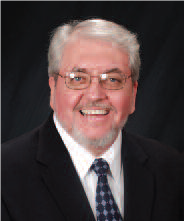 Editor’s Note: Jim Dunleavy is the Director of Physical Therapy and Rehabilitation for Trinitas Regional Medical Center.
Editor’s Note: Jim Dunleavy is the Director of Physical Therapy and Rehabilitation for Trinitas Regional Medical Center.

 academics pondering why attributes such as resilience have dwindled in recent decades. Dr. Richard Weissbourd, a Harvard professor, is also concerned about the priorities of parenting youth in America today. He calls upon parents to reflect upon the emphasis on their children’s happiness, self-esteem and achievement to the extent that these concerns appear to have usurped the importance of more character-driven values. Weissbourd goes on to say that American parents today are so concerned with their children’s achievement and happiness, that they shelter and hover—so much so that they attempt to envelop them in a stifling bubblewrap hug of insulation.
academics pondering why attributes such as resilience have dwindled in recent decades. Dr. Richard Weissbourd, a Harvard professor, is also concerned about the priorities of parenting youth in America today. He calls upon parents to reflect upon the emphasis on their children’s happiness, self-esteem and achievement to the extent that these concerns appear to have usurped the importance of more character-driven values. Weissbourd goes on to say that American parents today are so concerned with their children’s achievement and happiness, that they shelter and hover—so much so that they attempt to envelop them in a stifling bubblewrap hug of insulation.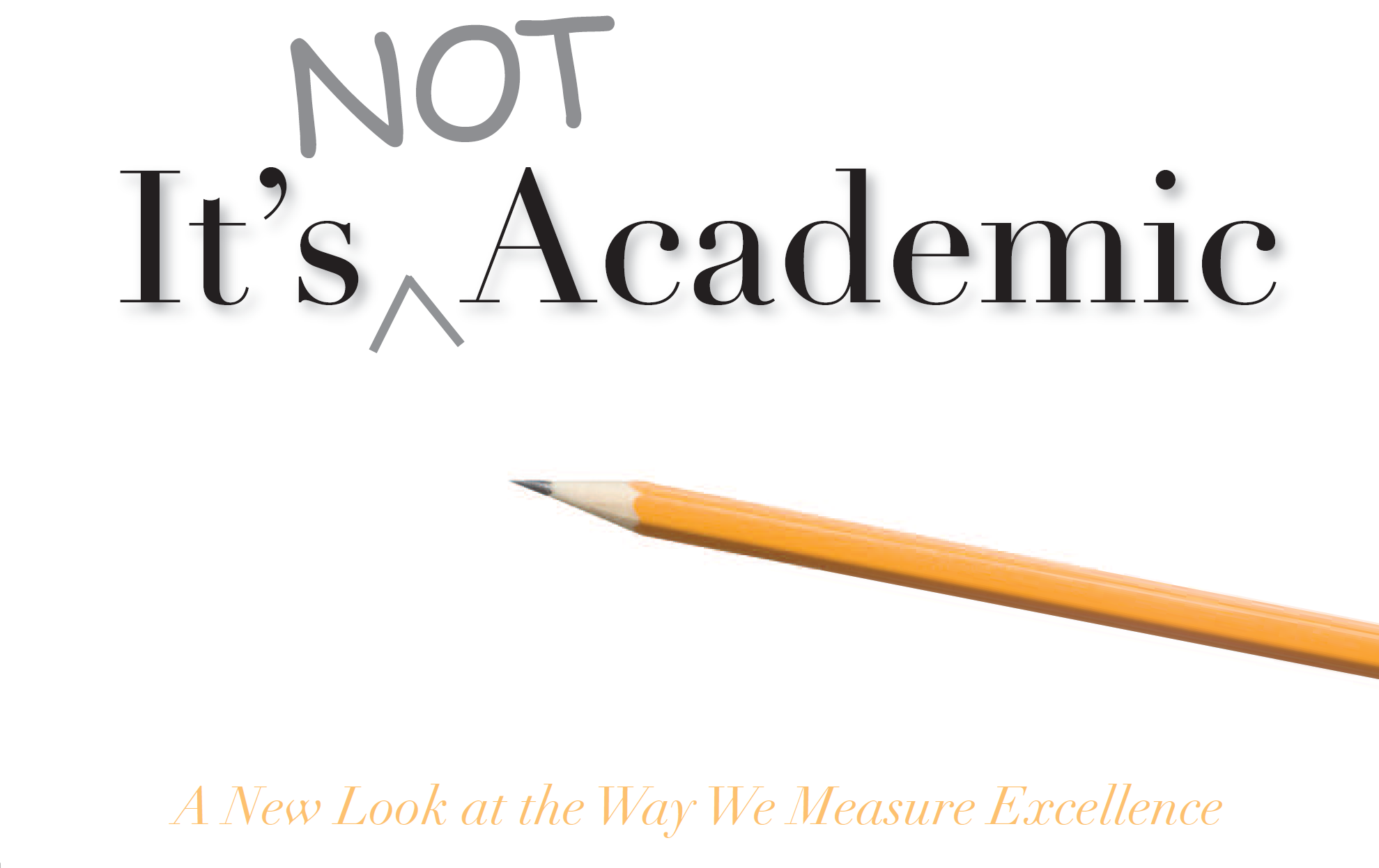
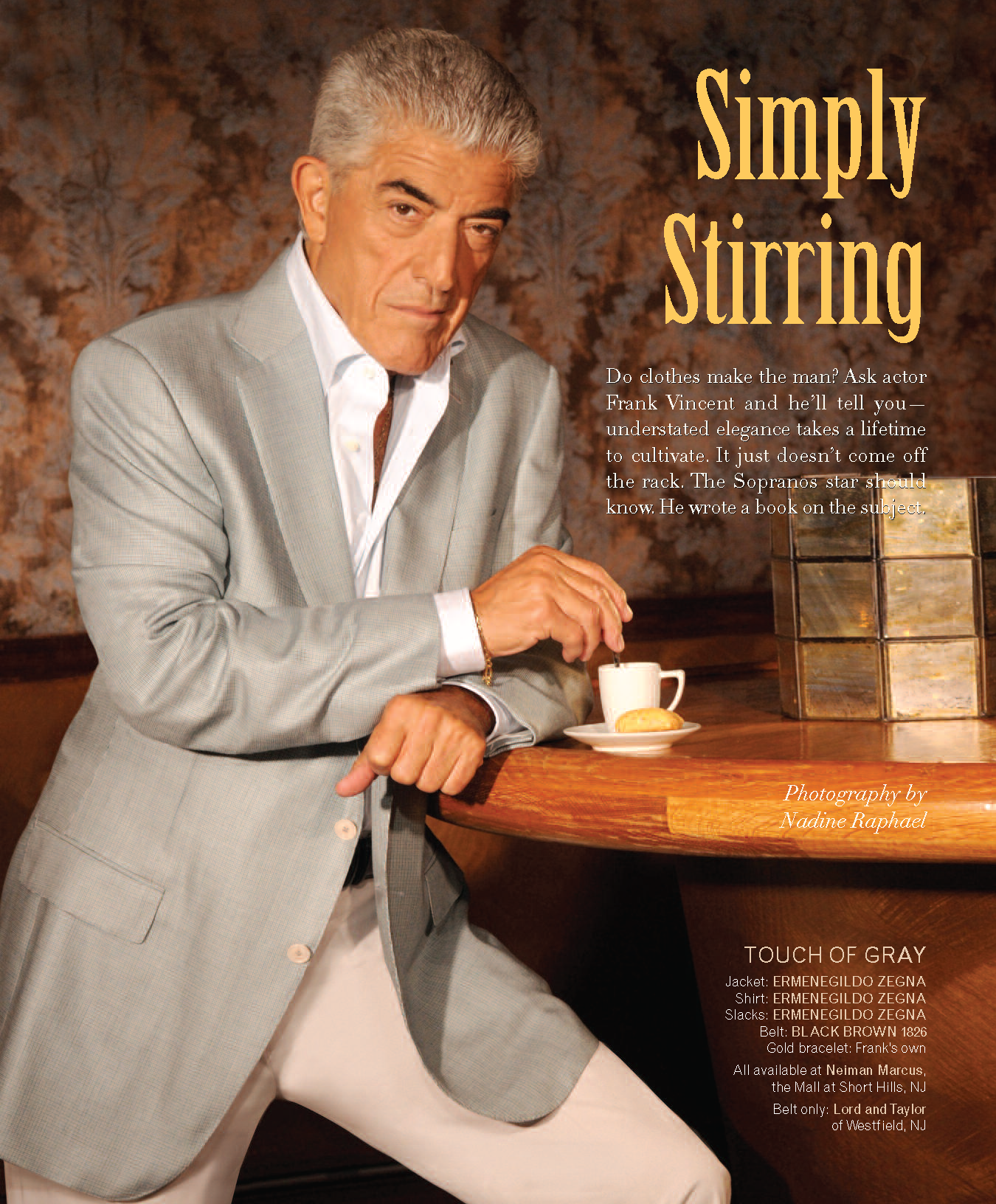

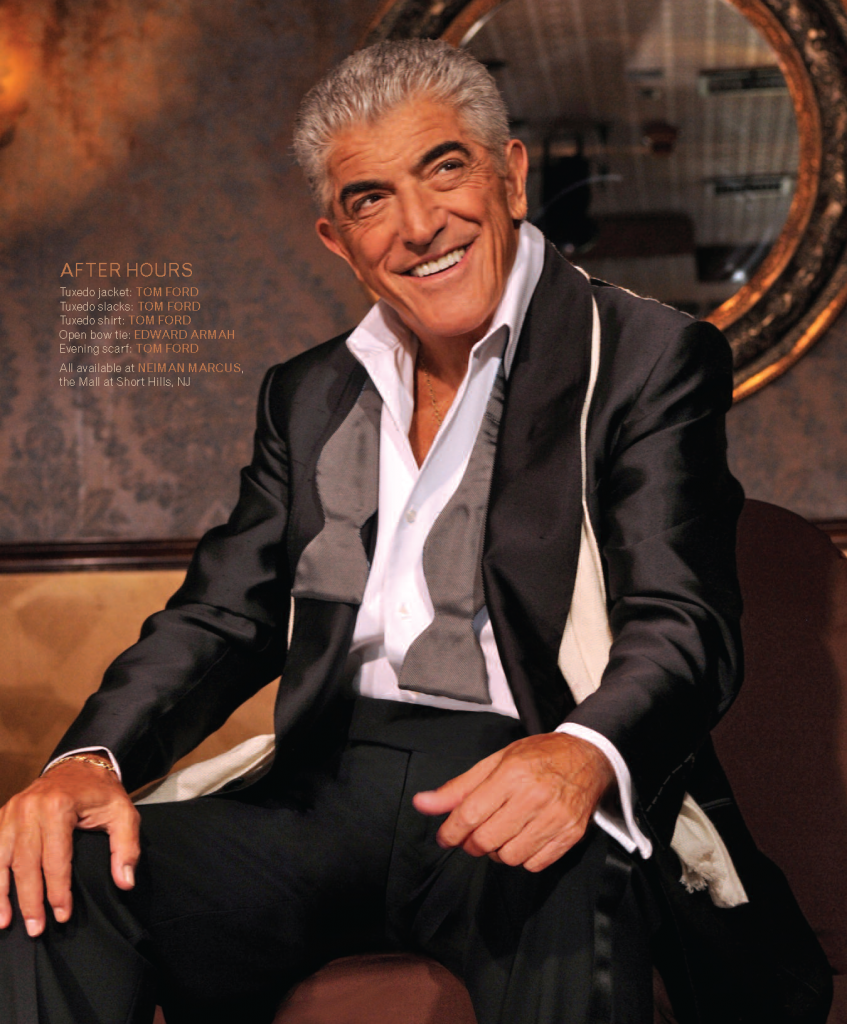


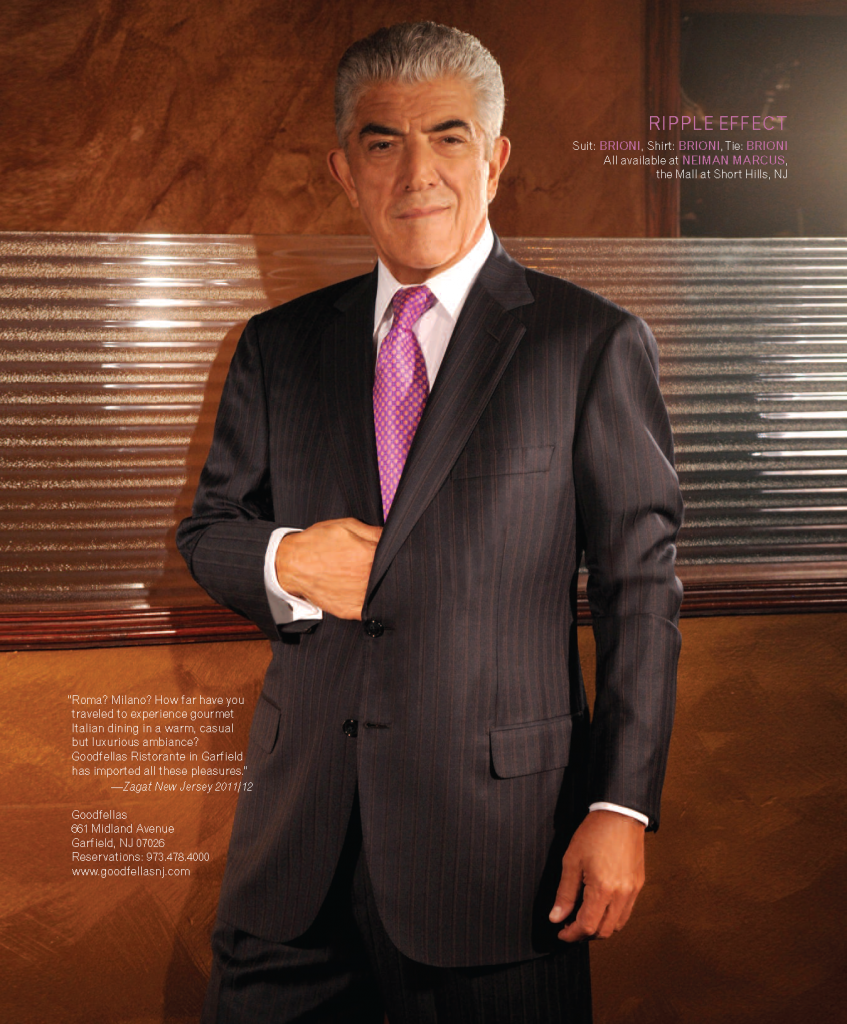



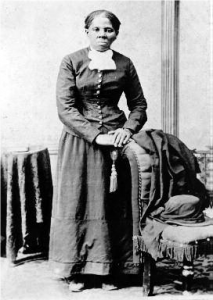
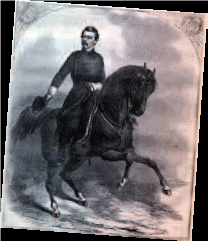
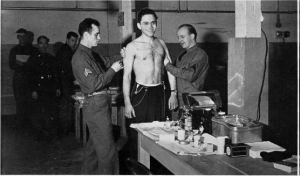


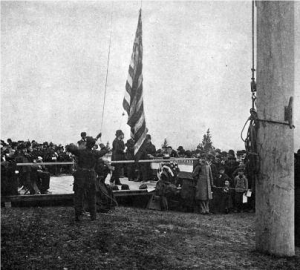
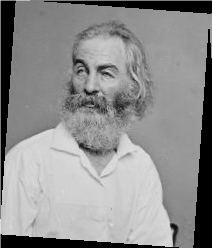



 The Ankle Bone’s Connected to the…What? That broken ankle may lead to bigger problems. So say researchers at Texas Tech, who recently established a link between ankle injuries and life-threatening complications, including deep vein thrombosis and pulmonary embolisms. The study suggested that treating physicians should assess patients with ankle fracture for their risk of developing a venous thromboembolic event on an individual basis, and also provide thromboprophylaxis (prevention of thrombosis) for those with an increased risk of developing such complications.
The Ankle Bone’s Connected to the…What? That broken ankle may lead to bigger problems. So say researchers at Texas Tech, who recently established a link between ankle injuries and life-threatening complications, including deep vein thrombosis and pulmonary embolisms. The study suggested that treating physicians should assess patients with ankle fracture for their risk of developing a venous thromboembolic event on an individual basis, and also provide thromboprophylaxis (prevention of thrombosis) for those with an increased risk of developing such complications. Let’s Do (it at) Lunch As a rule, people don’t mind paying the tab to achieve healthy, beautiful skin. Finding the time to make it happen is often the greater obstacle. According to plastic surgeon Dr. Joseph D. Alkon, there are a number of non-invasive, “lunchtime” treatments that can make your skin look and feel its best. “A chemical peel helps those with dry skin, uneven tone, acne, discoloration and/or mild wrinkles,” Dr. Alkon says. “This office-based procedure uses a special liquid to remove the harsh outer layers of skin, while leaving smoother and healthier layers intact. Peels vary from mild to aggressive depending on the skin being treated.” Microdermabrasion also works to remove unhealthy, dry, flaky outer skin, he adds. This procedure uses a gentle tool or wand to remove the outer layers of skin. This leaves behind fresh, healthy skin. Although commonly performed on the face, other body parts can benefit from both chemical peels and microdermabrasion. “A facial is another popular, relaxing and rejuvenating service,” Dr. Alkon says. “It’s often performed by a licensed esthetician, and includes a skin analysis followed by customized exfoliation, extraction, massage, and application of toners, moisturizers, and sunscreens customized to your skin type. A facial can leave the skin clean, clear, hydrated, and rejuvenated.”
Let’s Do (it at) Lunch As a rule, people don’t mind paying the tab to achieve healthy, beautiful skin. Finding the time to make it happen is often the greater obstacle. According to plastic surgeon Dr. Joseph D. Alkon, there are a number of non-invasive, “lunchtime” treatments that can make your skin look and feel its best. “A chemical peel helps those with dry skin, uneven tone, acne, discoloration and/or mild wrinkles,” Dr. Alkon says. “This office-based procedure uses a special liquid to remove the harsh outer layers of skin, while leaving smoother and healthier layers intact. Peels vary from mild to aggressive depending on the skin being treated.” Microdermabrasion also works to remove unhealthy, dry, flaky outer skin, he adds. This procedure uses a gentle tool or wand to remove the outer layers of skin. This leaves behind fresh, healthy skin. Although commonly performed on the face, other body parts can benefit from both chemical peels and microdermabrasion. “A facial is another popular, relaxing and rejuvenating service,” Dr. Alkon says. “It’s often performed by a licensed esthetician, and includes a skin analysis followed by customized exfoliation, extraction, massage, and application of toners, moisturizers, and sunscreens customized to your skin type. A facial can leave the skin clean, clear, hydrated, and rejuvenated.”  New Alzheimer’s Drug May Be on Horizon The medical profession has accepted the fact that there is no “cure” for Alzheimer’s. However, a trial just concluded found that patients who had injections every two weeks of the drug immunoglobulin—made from antibodies in human blood—showed no decline in cognition, memory, daily functioning or mood for a period of three years. Immunoglobulin is normally given to patients who suffer from an immune deficiency, and is extremely costly. If all goes well, however, the drug would be on the market within 10 years. “This is probably the most exciting drug we know about that is currently in the late stages of research,” says Clive Ballard, Director of Research at the Alzheimer’s Society. “We now know it is safe. But the real test will be whether these initial promising results can subsequently be replicated in larger groups.” As life spans increase, the likelihood that a person over the age of 65 will develop some form of dementia is about one in three. Currently, there are only three drugs for Alzheimer’s in the early to moderate stages, and they are effective in some patients but not in others.
New Alzheimer’s Drug May Be on Horizon The medical profession has accepted the fact that there is no “cure” for Alzheimer’s. However, a trial just concluded found that patients who had injections every two weeks of the drug immunoglobulin—made from antibodies in human blood—showed no decline in cognition, memory, daily functioning or mood for a period of three years. Immunoglobulin is normally given to patients who suffer from an immune deficiency, and is extremely costly. If all goes well, however, the drug would be on the market within 10 years. “This is probably the most exciting drug we know about that is currently in the late stages of research,” says Clive Ballard, Director of Research at the Alzheimer’s Society. “We now know it is safe. But the real test will be whether these initial promising results can subsequently be replicated in larger groups.” As life spans increase, the likelihood that a person over the age of 65 will develop some form of dementia is about one in three. Currently, there are only three drugs for Alzheimer’s in the early to moderate stages, and they are effective in some patients but not in others. Smile and Say “Aaaaaah” Do you experience nausea, bloating, heartburn, constipation, or a feeling of fullness? These may be symptoms of a motility disorder, such as gastroparesis and chronic constipation. Gastropathy is a common condition in long standing diabetic people, especially if not well controlled. People with gastropathy can suffer from postprandial indigestion, abdominal discomfort, nausea, and vomiting. Fortunately, the guesswork has been removed from diagnosis of these conditions thanks to the SmartPill, a wireless motility capsule procedure. “The SmartPill capsule travels through your GI tract, collects data, which is then recorded for your doctor to evaluate,” explains Samiappan Muthusamy M.D. of the Center for Digestive Diseases (cddnj.com), which offers this state-of-the art procedure. According to Dr. Muthusamy, the SmartPill can also diagnose Diffuse Colonic Dysfunction (aka lack of colon motility), an extremely serious condition that can present as constipation. Of course, causes such as a poor diet, lack of fluids, sluggish thyroid, colon cancer and constipating medications are ruled out first. “In modern medicine,” adds Dr. Muthusamy, “living with gastropathy and constipation is a thing of the past. They are treatable.”
Smile and Say “Aaaaaah” Do you experience nausea, bloating, heartburn, constipation, or a feeling of fullness? These may be symptoms of a motility disorder, such as gastroparesis and chronic constipation. Gastropathy is a common condition in long standing diabetic people, especially if not well controlled. People with gastropathy can suffer from postprandial indigestion, abdominal discomfort, nausea, and vomiting. Fortunately, the guesswork has been removed from diagnosis of these conditions thanks to the SmartPill, a wireless motility capsule procedure. “The SmartPill capsule travels through your GI tract, collects data, which is then recorded for your doctor to evaluate,” explains Samiappan Muthusamy M.D. of the Center for Digestive Diseases (cddnj.com), which offers this state-of-the art procedure. According to Dr. Muthusamy, the SmartPill can also diagnose Diffuse Colonic Dysfunction (aka lack of colon motility), an extremely serious condition that can present as constipation. Of course, causes such as a poor diet, lack of fluids, sluggish thyroid, colon cancer and constipating medications are ruled out first. “In modern medicine,” adds Dr. Muthusamy, “living with gastropathy and constipation is a thing of the past. They are treatable.” UGNJ Strikes Gold The Urology Group of New Jersey (UGNJ) recently earned The Joint Commission’s Gold Seal of Approval for its continuous standards of healthcare quality and safety in ambulatory care. By receiving this accreditation award, UGNJ is now the only Urology physician practice in the nation to achieve this status. Recognition followed a rigorous unannounced on-site survey of all 12 UGNJ offices in March 2012 by a team of expert surveyors, who evaluated the group’s standards of care specific to the needs of patients—including prevention of infection, leadership and medication management. “Achieving accreditation from The Joint Commission is a team effort that will bring confidence to our patients and give us a framework to provide the best care possible,” says Dr. Alan Krieger, UGNJ’s President.
UGNJ Strikes Gold The Urology Group of New Jersey (UGNJ) recently earned The Joint Commission’s Gold Seal of Approval for its continuous standards of healthcare quality and safety in ambulatory care. By receiving this accreditation award, UGNJ is now the only Urology physician practice in the nation to achieve this status. Recognition followed a rigorous unannounced on-site survey of all 12 UGNJ offices in March 2012 by a team of expert surveyors, who evaluated the group’s standards of care specific to the needs of patients—including prevention of infection, leadership and medication management. “Achieving accreditation from The Joint Commission is a team effort that will bring confidence to our patients and give us a framework to provide the best care possible,” says Dr. Alan Krieger, UGNJ’s President. Mapping Menopause A study published in July by the Endocrine Society suggests that the primary barrier to women receiving hormone therapy to treat menopausal symptoms is patients’ fears about the risks, and their unwillingness to discuss the option. What is interesting about this study is that it was conducted with internal medicine, family practice and OB/GYN physicians—and not patients. “Nearly every physician participating in the survey said menopausal symptoms have a negative impact on quality of life,” says William F. Young, Jr., MD, president of The Endocrine Society. “It’s important for a woman to know what hormonal and non-hormonal treatment options may be best for them to provide symptom relief.” To that end, the Society has created what it calls the Menopause Map, an online interactive tool that guides a woman through the different options available to get relief from her symptoms. The map uses a series of prompting questions about those symptoms and her personal health history, and also has links to questionnaires that help assess current risk for breast cancer, heart disease, and stroke. The tool weighs hormonal and non-hormonal therapies against the risks based on individual symptoms and medical history. The url is hormone.org/MenopauseMap.
Mapping Menopause A study published in July by the Endocrine Society suggests that the primary barrier to women receiving hormone therapy to treat menopausal symptoms is patients’ fears about the risks, and their unwillingness to discuss the option. What is interesting about this study is that it was conducted with internal medicine, family practice and OB/GYN physicians—and not patients. “Nearly every physician participating in the survey said menopausal symptoms have a negative impact on quality of life,” says William F. Young, Jr., MD, president of The Endocrine Society. “It’s important for a woman to know what hormonal and non-hormonal treatment options may be best for them to provide symptom relief.” To that end, the Society has created what it calls the Menopause Map, an online interactive tool that guides a woman through the different options available to get relief from her symptoms. The map uses a series of prompting questions about those symptoms and her personal health history, and also has links to questionnaires that help assess current risk for breast cancer, heart disease, and stroke. The tool weighs hormonal and non-hormonal therapies against the risks based on individual symptoms and medical history. The url is hormone.org/MenopauseMap.



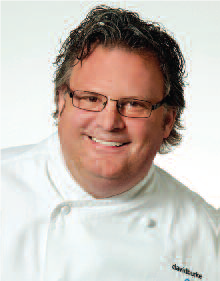 Editor’s Note: David owns David Burke Kitchen, David Burke Townhouse, Fishtail by David Burke and David Burke at Bloomingdales in New York, David Burke Fromagerie in Rumson, David Burke Prime in Connecticut and David Burke’s Primehouse in Chicago. www.davidburke.com
Editor’s Note: David owns David Burke Kitchen, David Burke Townhouse, Fishtail by David Burke and David Burke at Bloomingdales in New York, David Burke Fromagerie in Rumson, David Burke Prime in Connecticut and David Burke’s Primehouse in Chicago. www.davidburke.com



 only one who sees this?
only one who sees this? saying goodbye because he has to change his user name. (By the way, did you know that Lady Gaga has more Twitter followers than the Pope, the President, and Katy Perry—combined?)
saying goodbye because he has to change his user name. (By the way, did you know that Lady Gaga has more Twitter followers than the Pope, the President, and Katy Perry—combined?) in my voice, he tried to soften the blow. “Well, I’m not 100 percent sure about her.” But I knew he was right. She was a fake, too. Then, to add insult to injury, follower number one dropped me while my son was holding the phone. “Snap, crackle, pop,” he smiled, “you’ve been dropped!” Of course I was dropped.
in my voice, he tried to soften the blow. “Well, I’m not 100 percent sure about her.” But I knew he was right. She was a fake, too. Then, to add insult to injury, follower number one dropped me while my son was holding the phone. “Snap, crackle, pop,” he smiled, “you’ve been dropped!” Of course I was dropped.
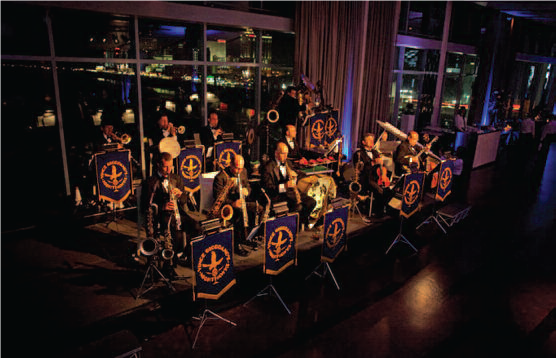


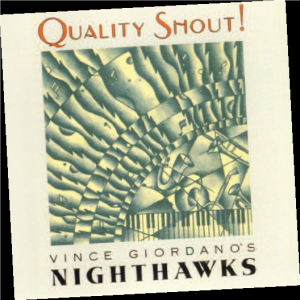
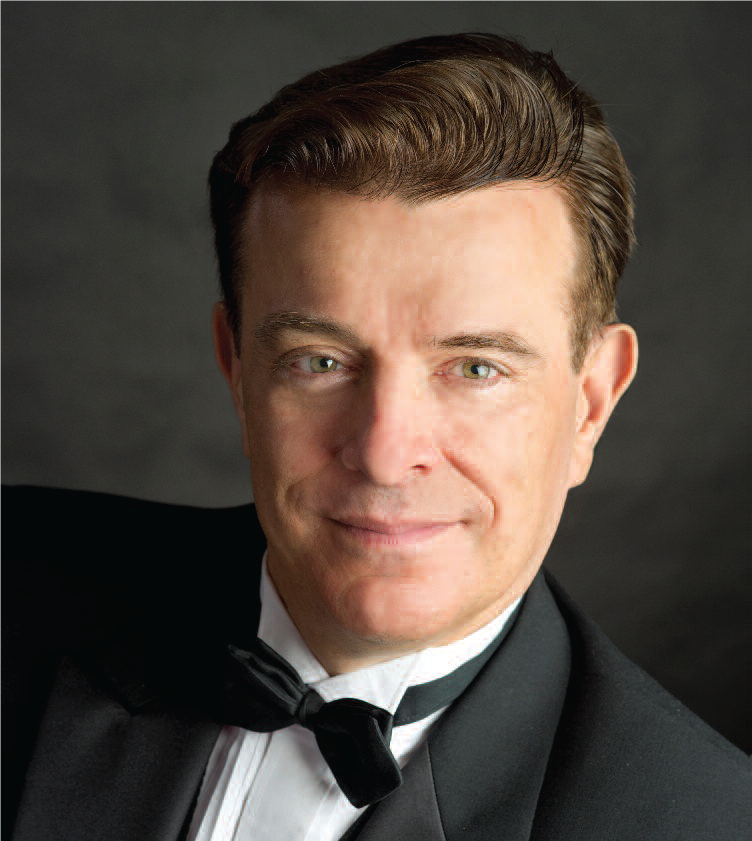
 beach the following summer resulted in the wound festering still further into a situation so serious that it could easily have become limb-threatening. Out of sheer frustration and in near panic, Schroeding resorted to doing his own research on the Internet and identified two out-of-state hospitals with highly renowned wound care centers: Johns Hopkins in Baltimore and Trinitas Regional Medical Center in Elizabeth. The Hopkins website cited a 60-70% heal rate, whereas Trinitas claimed more than 90% overall. That made the choice easy.
beach the following summer resulted in the wound festering still further into a situation so serious that it could easily have become limb-threatening. Out of sheer frustration and in near panic, Schroeding resorted to doing his own research on the Internet and identified two out-of-state hospitals with highly renowned wound care centers: Johns Hopkins in Baltimore and Trinitas Regional Medical Center in Elizabeth. The Hopkins website cited a 60-70% heal rate, whereas Trinitas claimed more than 90% overall. That made the choice easy.

 Don’t Walk Sign Are you a sleepwalker? If so, you’re definitely not alone. New research by the Stanford University School of Medicine found that somnambulism is far more prevalent than previous studies suggested. About 3.6 percent of American adults are prone to nocturnal wandering. That translates to 8.4 million. The same research suggests that sleepwalking is linked to anxiety and depression. A subject of humor and silliness in popular culture, this disorder can actually have serious consequences. Sleepwalkers have been known to injure themselves and others. They are also prone to psychosocial disorders. The Trinitas Sleep Disorders Center deals with sleepwalking and other problems every day. For information call 908-994-8694.
Don’t Walk Sign Are you a sleepwalker? If so, you’re definitely not alone. New research by the Stanford University School of Medicine found that somnambulism is far more prevalent than previous studies suggested. About 3.6 percent of American adults are prone to nocturnal wandering. That translates to 8.4 million. The same research suggests that sleepwalking is linked to anxiety and depression. A subject of humor and silliness in popular culture, this disorder can actually have serious consequences. Sleepwalkers have been known to injure themselves and others. They are also prone to psychosocial disorders. The Trinitas Sleep Disorders Center deals with sleepwalking and other problems every day. For information call 908-994-8694.

 Another Link Between TV & Obesity From the “Wait, Didn’t We Know that Already?” department comes the news that kids who watch a lot of TV have poorer overall diets than kids whose exposure to television is limited. “The more TV you watch, the less likely you were to eat fruits and vegetables every day, and the more likely you were to eat things like candy and soda, eat at a fast-food restaurant and even skip breakfast,” says study author Leah Lipsky of the Eunice Kennedy Shriver National Institute of Child Health and Human Development. The research doesn’t prove that TV watching influences what kids eat, but strongly suggests a link between TV, snacking and a lack of exercise. Add questionable parenting to the mix and you have yet another contributing factor to America’s epidemic of childhood obesity. The average age of the children in the study was 13.
Another Link Between TV & Obesity From the “Wait, Didn’t We Know that Already?” department comes the news that kids who watch a lot of TV have poorer overall diets than kids whose exposure to television is limited. “The more TV you watch, the less likely you were to eat fruits and vegetables every day, and the more likely you were to eat things like candy and soda, eat at a fast-food restaurant and even skip breakfast,” says study author Leah Lipsky of the Eunice Kennedy Shriver National Institute of Child Health and Human Development. The research doesn’t prove that TV watching influences what kids eat, but strongly suggests a link between TV, snacking and a lack of exercise. Add questionable parenting to the mix and you have yet another contributing factor to America’s epidemic of childhood obesity. The average age of the children in the study was 13.







